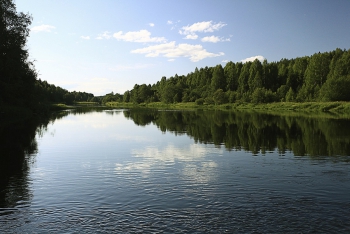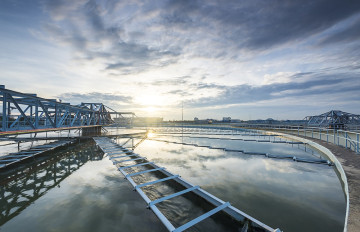Water is a finite resource, and it's becoming increasingly scarce in many parts of the world. In addition, the demand for water is growing as the world's population increases and the economy expands. The cost of water reflected on a utility bill can be relatively low and will most certainly not account for the embedded costs that are associated with water usage. It is therefore essential for companies to understand the true cost of water at their facilities.
What is the True Cost of Water?
Calculating the true cost of water involves looking beyond the direct cost of water usage and discharge to include the indirect costs of water use, such as the cost of necessary treatment by a facility before use, the cost of water-related infrastructure, the cost of energy to transport water, and the cost of environmental damage caused by water use.
By taking into account all of these costs, companies can make more informed decisions about their water use and identify opportunities to reduce water consumption and more accurately assess the costs associated.
In addition, calculating the true cost of water can help companies assess their water-related risks and develop more effective water management strategies. By understanding the true cost of water, companies can prioritize investments in water-efficient technologies and practices and work with suppliers to reduce their water footprint.
Download our full Water Risk Assessment Methodology for more.
Calculating the true cost of water can also help companies meet their sustainability goals and demonstrate their commitment to responsible water stewardship. As consumers and stakeholders become increasingly aware of the environmental impact of business operations, companies that can demonstrate a commitment to sustainable water management are likely to enjoy a competitive advantage. Investors are urging water-intensive companies to report on water security (CDP, 2021) and leading disclosure frameworks like CDP are responding by asking companies to disclose their efforts in evaluating the embedded costs associated with water usage in their operations.
How The True Cost of Water can Promote a Circular Economy
Evaluating the true cost of water is closely connected to implementing circularity principles. Circular economy principles aim to minimize waste and promote resource efficiency by keeping materials and products in use for as long as possible, thereby reducing the need for new resource extraction and minimizing environmental impacts.
Similarly, the goal of evaluating the true cost of water is to promote water conservation and efficiency in facility operations by taking multiple factors other than merely utility costs into account.
By integrating circularity principles into their operations, companies can reduce their water consumption, minimize their water-related environmental impact, and save money in the long run. For example, companies can use recycled water in their production processes or treat wastewater to a quality suitable for reuse, reducing their reliance on freshwater sources.
This not only reduces their water consumption and related costs but also helps to conserve water resources for other users and ecosystems.
Furthermore, evaluating the true cost of water can identify opportunities to increase water efficiency and reduce waste, which also aligns with circularity principles. For example, companies can identify and eliminate inefficiencies in their water use by conducting a water audit, implementing water-efficient technologies, and optimizing their water use.
These actions all promote good water stewardship in the watershed while reducing operational costs and saving money for the facility. This information can also inform decision-making processes and help develop a more comprehensive water management strategy that aligns with your business goals and sustainability targets.
Facility Optimization Audit: The First Step to Calculating True Water Costs
The first step to calculating the true cost of water at your facility is to conduct a facility optimization audit or water efficiency assessment. A water audit is a detailed analysis of your facility's water use, including the identification of all sources of water use, the amount of water used, and the cost of water supply and discharge.
During the water audit, it's important to identify both direct and indirect water use, such as the water used in production processes, irrigation, cooling, cleaning, and sanitation. Indirect water use can also include the water embedded in the products or services produced by your facility or the water used by your suppliers or customers.
Once you have a comprehensive understanding of your facility's water use, you can start to estimate the indirect costs of water use, such as the cost of infrastructure, energy, and environmental damage caused by water use. You may also want to consider the social and economic costs of water scarcity in your region or the potential cost of future regulatory requirements related to water use.
Embracing the True Value of Water
In conclusion, calculating the true cost of water is crucial for companies aiming to drive circular water management and achieve sustainable water stewardship.
By going beyond utility bills and considering the direct and indirect costs associated with water usage, companies can make informed decisions, identify opportunities for efficiency and conservation, and mitigate water-related risks. Integrating circularity principles into operations allows for reduced water consumption, minimized environmental impact, and long-term cost savings.
Moreover, assessing the true cost of water aligns with the goals of the circular economy, promoting resource efficiency and minimizing waste. By taking the necessary steps to evaluate true water costs, conducting water audits, and implementing efficient technologies, businesses can not only protect the environment but also enhance their competitiveness and demonstrate their commitment to responsible water management.
Embracing the true value of water is a transformative journey that benefits not only businesses but also the broader ecosystem and future generations.
For help with your facility’s true cost of water calculation, reach out to Antea Group’s Water Stewardship experts today.
Want more news and insights like this?
Sign up for our monthly e-newsletter, The New Leaf. Our goal is to keep you updated, educated, and even a bit entertained as it relates to all things EHS and sustainability.
Have any questions?
Contact us to discuss your environment, health, safety, and sustainability needs today.









